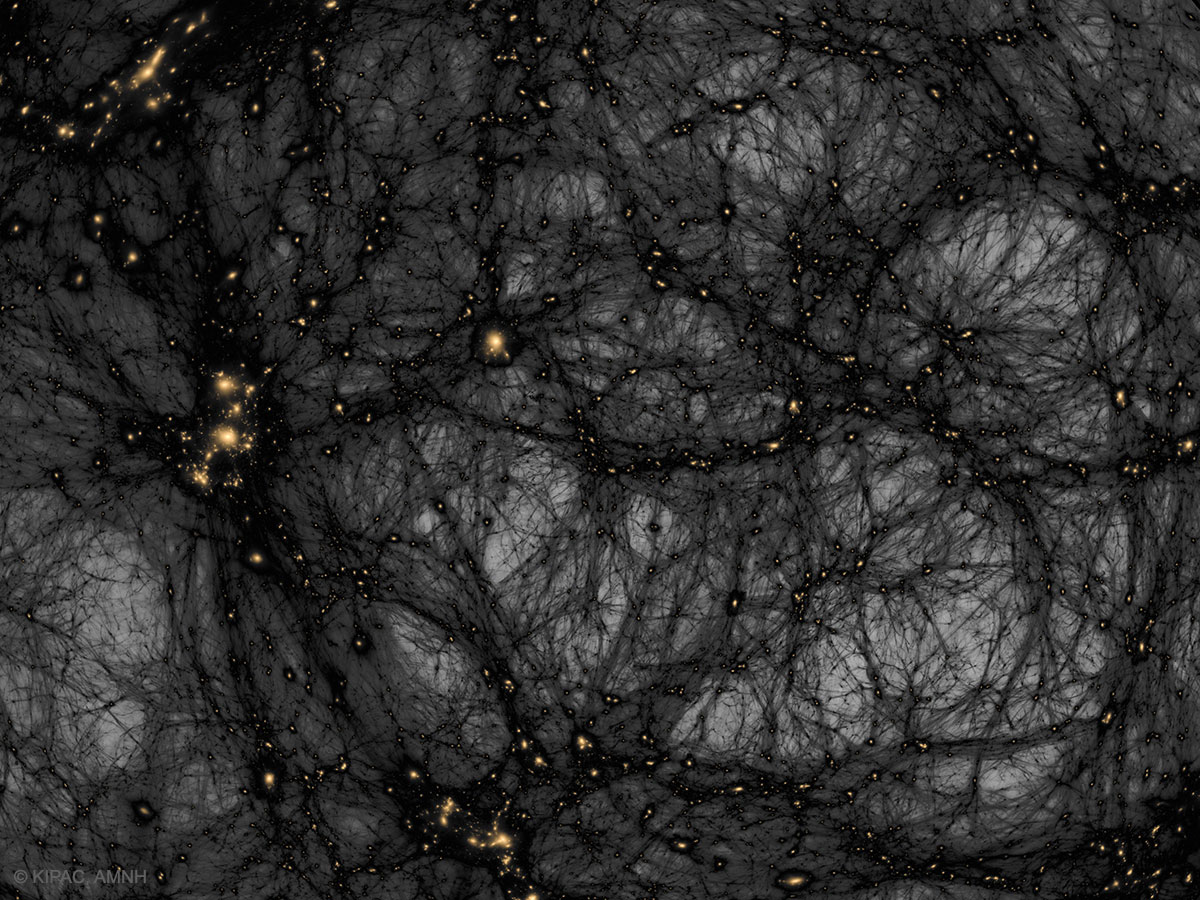2020年10月25日
Dark Matter in a Simulated Universe
Illustration Credit & Copyright: Tom Abel & Ralf Kaehler (KIPAC, SLAC), AMNH
Explanation: Is our universe haunted? It might look that way on this dark matter map. The gravity of unseen dark matter is the leading explanation for why galaxies rotate so fast, why galaxies orbit clusters so fast, why gravitational lenses so strongly deflect light, and why visible matter is distributed as it is both in the local universe and on the cosmic microwave background. The featured image from the American Museum of Natural History’s Hayden Planetarium previous Space Show Dark Universe highlights one example of how pervasive dark matter might haunt our universe. In this frame from a detailed computer simulation, complex filaments of dark matter, shown in black, are strewn about the universe like spider webs, while the relatively rare clumps of familiar baryonic matter are colored orange. These simulations are good statistical matches to astronomical observations. In what is perhaps a scarier turn of events, dark matter — although quite strange and in an unknown form — is no longer thought to be the strangest source of gravity in the universe. That honor now falls to dark energy, a more uniform source of repulsive gravity that seems to now dominate the expansion of the entire universe.
Tomorrow’s picture: spooky space
虚拟宇宙里的暗物质
图示提供与版权:Tom Abel & Ralf Kaehler (KIPAC, SLAC), AMNH
说明: 我们的宇宙在闹鬼吗?因为,在这张暗物质图里看似如此。不可见暗物质产生的重力,是星系自转为何如此高速、星系绕星系团公转为何如此快速、重力透镜聚光的能力为何这么强、以及可见物质在近域宇宙和宇宙微波背景上为何会如此分布,最广被接受的解释。上面这幅由美国自然历史博物馆.海登天文馆提供的主题图示,突显在某个暗物质宇宙里,无所不在的暗物质或许会如何影响我们的宇宙。在这张细致的电脑模拟图里,无处不在的复杂丝缕状黝黑暗物质,像蜘蛛网般穿梭在宇宙里,其中橘色的斑块,是我们熟悉但相对少见的重子物质。这些电脑模拟,在统计学上和天文观测相当接近。但最让我们惊吓的是,尽管暗物质极为怪异,而且其形态不明,但在我们的认知里,它已不再是宇宙中最奇怪的重力源。这个头衔得让给暗能量,一种目前看似主宰整个宇宙扩张,分布也较均匀的排斥性重力源。
明日的图片: spooky space







